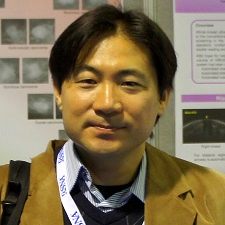Image and Video Processing in Medicine
A special issue of Journal of Imaging (ISSN 2313-433X).
Deadline for manuscript submissions: closed (30 October 2016) | Viewed by 62225
Special Issue Editors
Interests: computer vision; image processing; pattern recognition; 3D image reconstruction, spatio-temporal image change detection and tracking; fusion and registering from imaging sensors; superresolution from low-resolution image sensors
Special Issues, Collections and Topics in MDPI journals
Interests: image processing; computer vision; medical and biomedical image analysis; 3D/4D image analytics; remote sensing
Interests: deep learning; machine learning; computer-aided diagnosis; medical imaging
Special Issues, Collections and Topics in MDPI journals
Special Issue Information
Dear Colleagues,
Medical imaging and video analysis are oriented to extract information from structures in the human body. Prevention, diagnosis and monitoring of diseases, caused by different pathologies, are the main objective.
Image and video acquisition, processing and interpretation are oriented toward the efficiency of anatomy and physiology analysis, to achieve the above objectives.
The following is a list of the main topics covered by this Special Issue. The issue will, however, not be limited to these topics:
- Image and video acquisition instruments and technologies: visible cameras, radiography, tomography, magnetic resonance, nuclear-based devices, ultrasound (echocardiography), acoustic, thermography, neuroimaging.
- Image processing techniques: enhancement, segmentation, texture analysis, image fusion.
- Computing vision-based approaches: pattern recognition, 2D/3D structures.
Prof. Dr. Gonzalo Pajares Martinsanz
Prof. Dr. Philip Morrow
Dr. Kenji Suzuki
Guest Editors
Manuscript Submission Information
Manuscripts should be submitted online at www.mdpi.com by registering and logging in to this website. Once you are registered, click here to go to the submission form. Manuscripts can be submitted until the deadline. All submissions that pass pre-check are peer-reviewed. Accepted papers will be published continuously in the journal (as soon as accepted) and will be listed together on the special issue website. Research articles, review articles as well as short communications are invited. For planned papers, a title and short abstract (about 100 words) can be sent to the Editorial Office for announcement on this website.
Submitted manuscripts should not have been published previously, nor be under consideration for publication elsewhere (except conference proceedings papers). All manuscripts are thoroughly refereed through a single-blind peer-review process. A guide for authors and other relevant information for submission of manuscripts is available on the Instructions for Authors page. Journal of Imaging is an international peer-reviewed open access monthly journal published by MDPI.
Please visit the Instructions for Authors page before submitting a manuscript. The Article Processing Charge (APC) for publication in this open access journal is 1800 CHF (Swiss Francs). Submitted papers should be well formatted and use good English. Authors may use MDPI's English editing service prior to publication or during author revisions.








